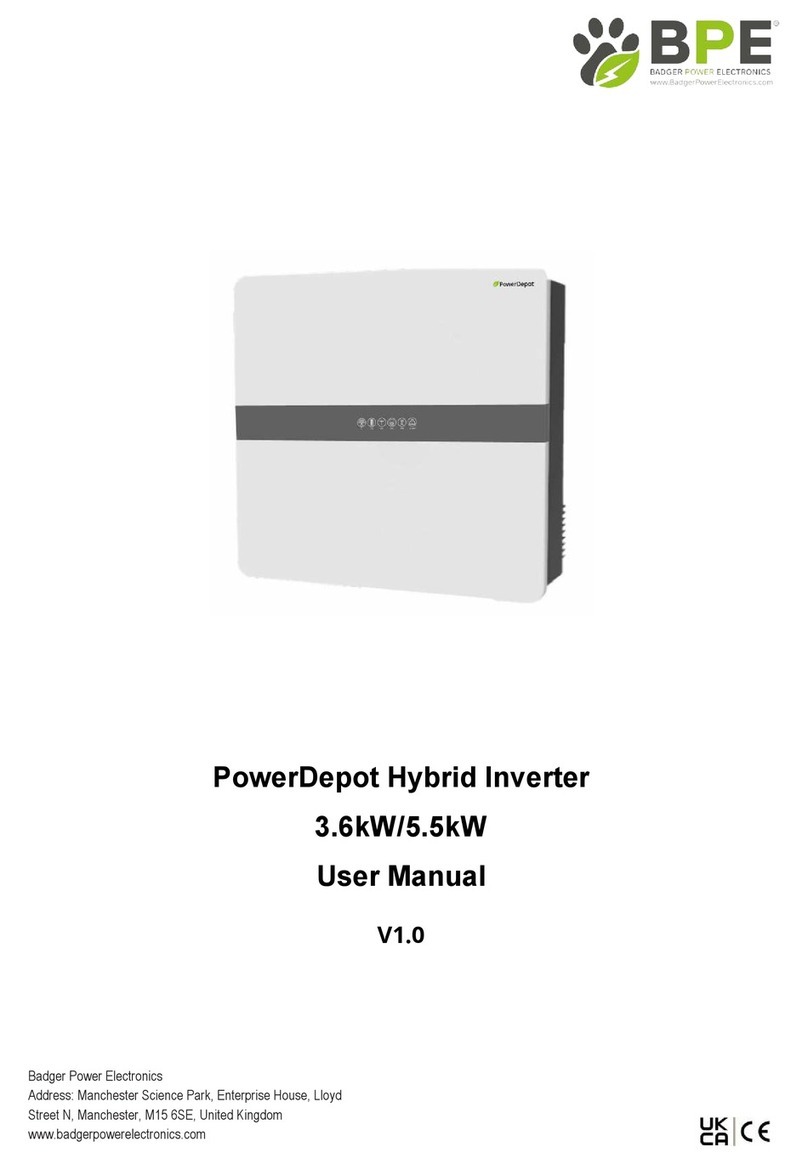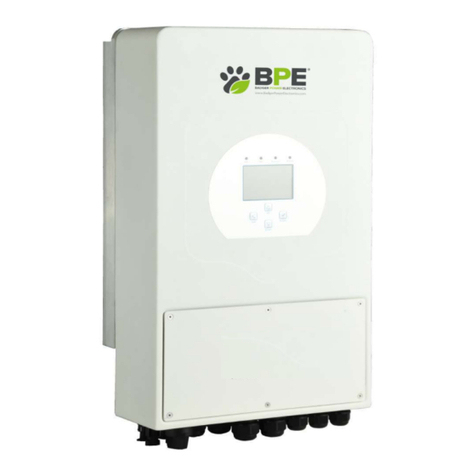
This manual contains important instructions for the proper installation and maintenance of the
Photovoltaic Grid-connected Inverter (Microinverter). To reduce the risk of electrical shock, and
ensure safe installation and operation of the Microinverter, the followingsymbols appear
throughout this document to indicate dangerous conditions and important safety considerations.
Specifications are subject to change without notice - please ensure you are using the most recent update
found at the manufacturer website.
WARNING SYMBOL: Indicates a situation where failure to follow instructions
appropriately may cause a serious hardware failure or personal injury. Use extreme
caution when performing this task.
WARNING
SYMBOL
NOTE SYMBOL: Displays information that is important for optimized microinverter
operation. Follow these instructions closely.
Safety Instructions
Do NOT disconnect the PV module from the Microinverter without
first disconnecting the AC power.
NOTE
SYMBOL
Only qualified professionals should install and/or replace the Microinverters.
Perform all electrical installations in accordance with local electrical codes.
Before installing or using the Microinverter, please read
all instructions and cautionary markings in the technical documents and on the Microinverter
system and the solar-array.
Be aware that the body of the Microinverter is a heat-sink, and can reach temperatures
close to 80°C. To reduce risk of burns, do not touch the body of the Microinverter.
DO NOT attempt to repair the Microinverter. If it fails, contact Customer Support to obtain an
RMA number and start the replacement process. Damaging or opening the Microinverter will
void the warranty.
Caution!
The external protective grounding conductor is connected to the inverter grounding
terminal through AC connector.
For connection: Connect the AC connector first to ensure inverter grounding, then
perform the DC connections.
When disconnecting: First disconnect the AC connector by opening the branch circuit breaker,
with the protective grounding conductor still connected. Disconnect the DC inputs afterwards.
In any circumstance, do not connect DC input when the AC connector is unplugged.
Please install isolation switching devices on the AC side of the inverter.
Important Safety Instructions





























